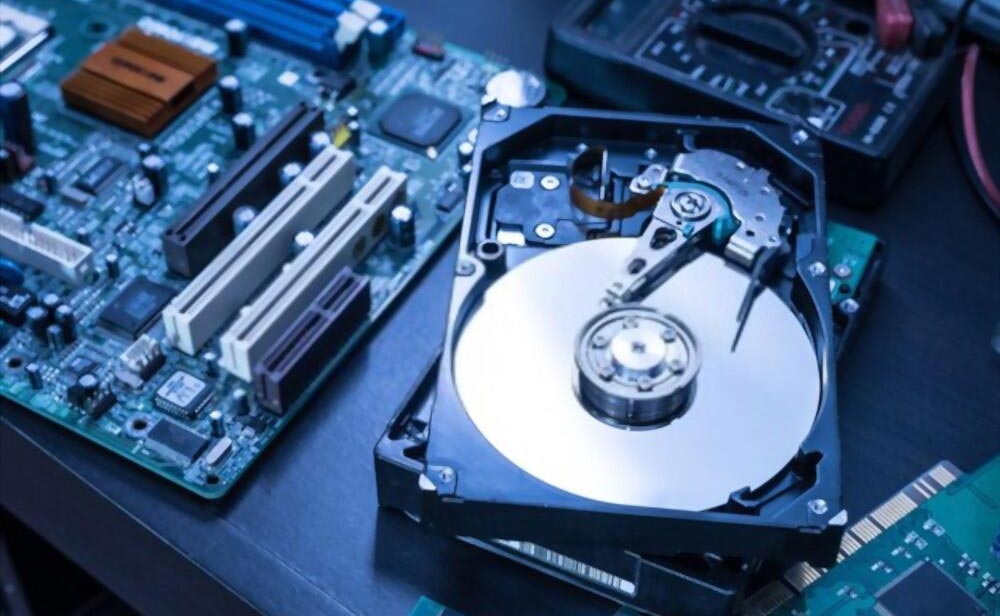External hard drives can be considered both a blessing and a curse. We use them to store terabytes of photos, documents, and more, but all of this data is more insecure than you might think, as external drives aren’t as reliable and durable as they seem.
How Is Data Stored On An External Hard Drive?
In HDDs, the data bits (all those 1’s and 0’s of binary code) are stored on the magnetic layer of the platter (or platters) and are read and written by a series of heads that “float” across the surface of the drive that turns Over time, the bits can change their magnetic polarity, which can cause data corruption. However, almost every modern HDD hard drive is provided with Error Correcting Code (ECC) that detects errors and corrects them, if possible.
A solid-state drive (SSD) has no moving parts, but instead has a chip with cells in which data is stored. All cells are separated with an insulating layer so that charged electrons stay inside. Over time, the layer degrades and charged electrons leak out, causing data loss.
As for the lifespan of an external hard drive, in case of an SSD it is relatively shorter due to a limited number of write cycles (up to 100,000). On the other hand, an HDD is made up of moving parts, so the chances of one of those parts failing and causing data loss are higher compared to solid state drives.
What Could Cause Data Loss From An External Hard Drive?
Also, both HDDs and SSDs can lose data due to:
- accidental drive formatting or file deletion;
- physical damage (exposure to extreme temperatures, magnetic fields, high humidity, shock, fire, etc.);
- electrical overload or power outage;
- file system or partition corruption;
- software bug;
- virus attack or spyware infection.

The problem is not with the fact that external hard drives can fail, but with the fact that they can fail unexpectedly. Therefore, making regular backups of important files is the best practice, regardless of the type of data storage used. Additionally, to minimize the risks of data loss, it is recommended that you:
- partition your external hard drive (in other words, you need to create separate zones for program and data, so that when the program “part” fails, it will still be possible to recover user data stored in a separate location);
- perform disk defragmentation (for HDD only) to organize your files more contiguously and speed up PC performance;
- install antivirus software on your computer and always keep it up to date;
- avoid connecting an external data storage device to a computer, when in doubt whether it has any antivirus protection;
- use a surge protector;
- avoid deleting a file, if you don’t know what it is for, especially one from the system;
- store your external hard drive in a dry, well-ventilated and safe place;
- avoid dropping an HDD or turning it over while it is running and right after it is safely disconnected from a PC;
- connect external hard drives using their native cables (or cables from a trusted brand);
Please refrain from inserting an external data device into a damaged or non-functional USB slot as this may destroy both your external hard drive and PC.
And once you realize that some data has been lost or deleted from your external hard drive, please refer to the list of rules to keep in mind when recovering it. They will help you avoid serious mistakes.
What Are The Chances Of Recovering Files From An External Hard Drive?
The chances of successful data recovery depend on a number of factors, in particular, the problem that caused the data loss. Physical damage to an HDD can usually be recognized by clicking and other unusual noises. Please don’t misunderstand: it is normal for a HDD to make noise, especially when booting up or accessing/copying data, but the noise should be low-pitched and unobtrusive.
In case of a persistent clicking or grinding noise, or when an HDD continues to vibrate or beeps and stops humming, that could be a sign of something wrong. And when it comes to mechanical damage to an external hard drive, it is recommended to contact a data recovery center, as only a qualified specialist can assess the extent of the damage and restore data without making things worse.
On the other hand, in case you deleted some files by mistake, accidentally formatted your drive, or encountered a logical failure like partition or file system corruption, the chances of restoring deleted or lost files are usually quite high (by least, before they are overwritten). However, they depend on the file system of your HDD or SSD, since it is the system that determines how files are deleted from a device.
Most external hard drives have NTFS, HFS+, FAT32, or exFAT. So, the chances of a successful data restoration can range from almost 100% in the case of NTFS to quite moderate in the case of FAT32 or exFAT, when it is usually possible to recover only a part of the lost information. . As for HFS+, the success of the file recovery procedure is determined by how long the drive has been used after the data wipe.
Finally, please note that if you use an external SSD that was previously part of a PC, data recovery would be almost impossible due to the TRIM command enabled by default on most internal SSD hard drives. For more information about tech, click to home theatre power manager that would be the right place for you.



